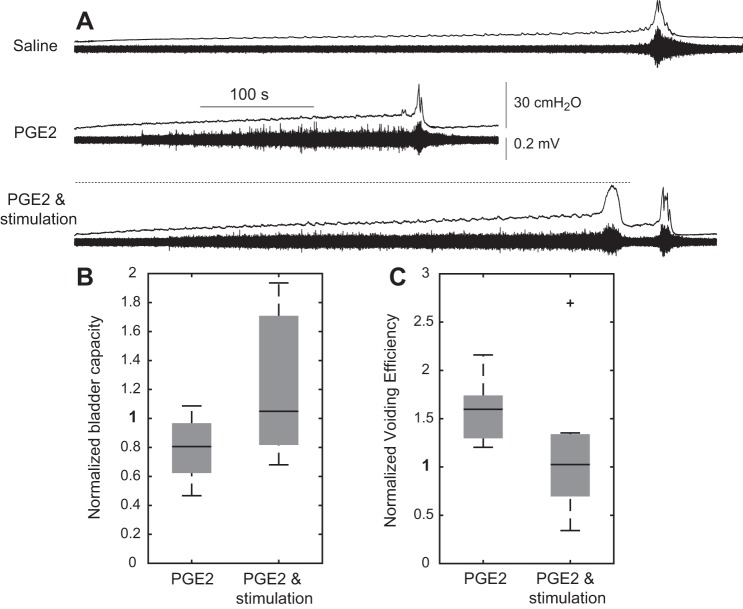Fig. 5.
Sensory pudendal nerve stimulation increases bladder capacity in an intravesical PGE2 model (100 μM) of overactive bladder. A: example traces showing a decrease in bladder capacity with intravesical PGE2 and increase in bladder capacity with sensory pudendal stimulation. B: bladder capacity decreased with PGE2 (P = 0.02) and increased (relative to PGE2) with stimulation (P = 0.004) (n = 9). C: voiding efficiency increased with PGE2 (P < 0.001) and decreased (relative to PGE2) with stimulation [P = 0.05; P = 0.01 with removal of the outlier (+)]. All stimulation was at 20 Hz with amplitudes ranging from 100 to 800 µA (mean 330 ± 63 µA SE). Voided volume (to compute the voiding efficiency) included volume expelled during the first micturition event through 1 min following stimulus termination.

